History: July 2019 Archives
In addition to watching commemorations on television and online, Tulsans have several options nearby and within a day's drive for remembering the 50th anniversary of mankind's first steps on the moon.
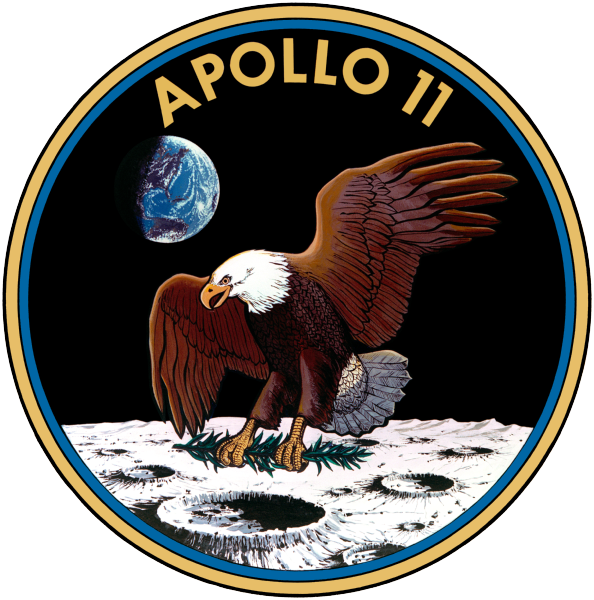
The 2019 Oklahoma Aviation and Space Trail links the Tulsa Air and Space Museum, the Oklahoma History Center in Oklahoma City, and the Stafford Air and Space Museum in Weatherford, west of OKC on I-40, all of which are exhibiting Apollo-related artifacts. Getting a "passport" stamp at all three museums prior to World Aviation Day on August 19, 2019, enters you in a drawing for a free one-year membership.
Tulsa Air and Space Museum has a temporary exhibit on local contributions to the Apollo 11 mission. The display includes an Apollo command module, two Master Command Control consoles, a large-scale model of the Saturn V rocket, and the story of record-setting Skylab astronaut William Pogue, from Okemah and Sand Springs, Oklahoma, who worked in a support role to help Buzz Aldrin prepare for Apollo 11 and played a key role in the command center during pre-launch.
The Oklahoma History Center will host a special showing of the Smithsonian Channel documentary The Day We Walked on the Moon at 1:00 pm on July 20.
The Stafford Air and Space Museum, named in honor of General Thomas P. Stafford, a four-time astronaut and native of Weatherford, has a permanent exhibit of space artifacts, including many related to Stafford's astronaut career, such as the Gemini 6A capsule and his Apollo 10 space suit. Stafford served on two Gemini missions, was commander of the Apollo 10 moon landing dress rehearsal, which flew to within 9 miles of the lunar surface, and commanded the Apollo-Soyuz Test Project, which involved rendezvous and docking of American and Soviet vehicles in earth orbit.
Four hours' drive from Tulsa, the Cosmosphere in Hutchinson, Kansas has a week of special Apollo 11 events leading up to a July 20, 2019, screening of CBS News moon landing coverage on the Cosmosphere lawn, followed by an opportunity to view the moon and planets through a 16" telescope. Our family has made several visits to the Cosmosphere, which tells the story of the space race between the USA and the USSR through a well-organized timeline of artifacts, including the Mercury Liberty Bell 7 capsule. The Cosmosphere has the largest collection of Soviet space artifacts outside of the old Soviet Union.
As you might expect, Space Center Houston at NASA's Johnson Manned Spaceflight Center in Houston, which served as Mission Control for Apollo 11, has a nine-day extravaganza of events planned running from the anniversary of launch on July 16 to the anniversary of splashdown on July 24. Highlights include mission briefings related to the day-to-day timeline of Apollo 11; Apollo 11-themed pop-up science labs; panel discussions with Apollo flight controllers on July 16 and with the children of Apollo astronauts on July 18; a July 19 briefing, for museum members only, on the next generation of lunar vehicles, from the chief engineer of Lockheed Martin Commercial Civil Space Division; and a July 23 panel discussion with current NASA flight controllers. The July 19th presentation with mission flight director Gene Kranz is sold out. The event that looks the most interesting to me is a special presentation on July 21: Apollo Engineering Design, Development, and Certification Challenges, featuring engineers who were involved with the design of Apollo spacecraft systems.
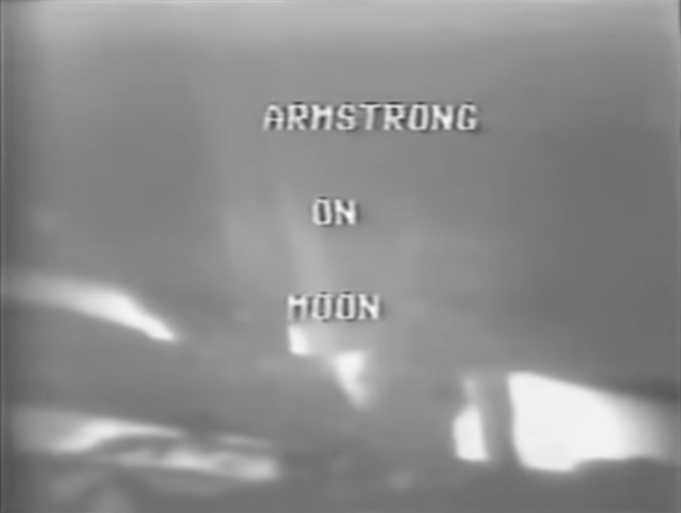
For folks of my age and older, watching men walk on the moon for the first time was an unforgettable thrill. Happily, through the wonders of the internet, there are many ways you can relive that experience and share it with the Gen Xers and later generations that missed out the first time.
My earliest clear memory of America in space is of Apollo 7, and I remember the names of the early command and lunar modules (Gumdrop and Spider on Apollo 9; Charlie Brown and Snoopy on Apollo 10). I have vague memories of watching launches on TV in a house we lived in in 1965-1966, which would have been during Project Gemini. Although the Gemini and Apollo launches typically happened at roughly two-month intervals, to my preschool brain it seemed like a regular TV series.
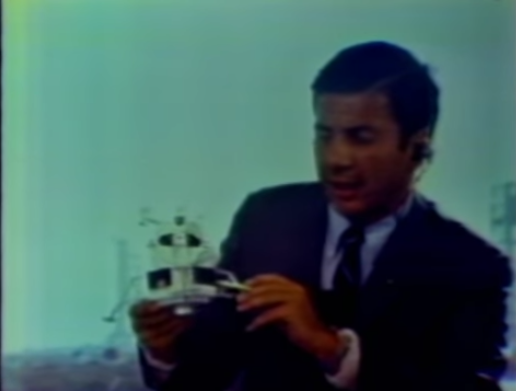
To see the Apollo 11 mission as we would have experienced it in 1969, you can watch online video of live coverage on the major TV networks. It's fascinating to see how the networks handled the absence of live video from space, playing the mission audio over animations of the lunar module in flight or video of actors in spacesuits manipulating controls in a replica of the lunar module interior.
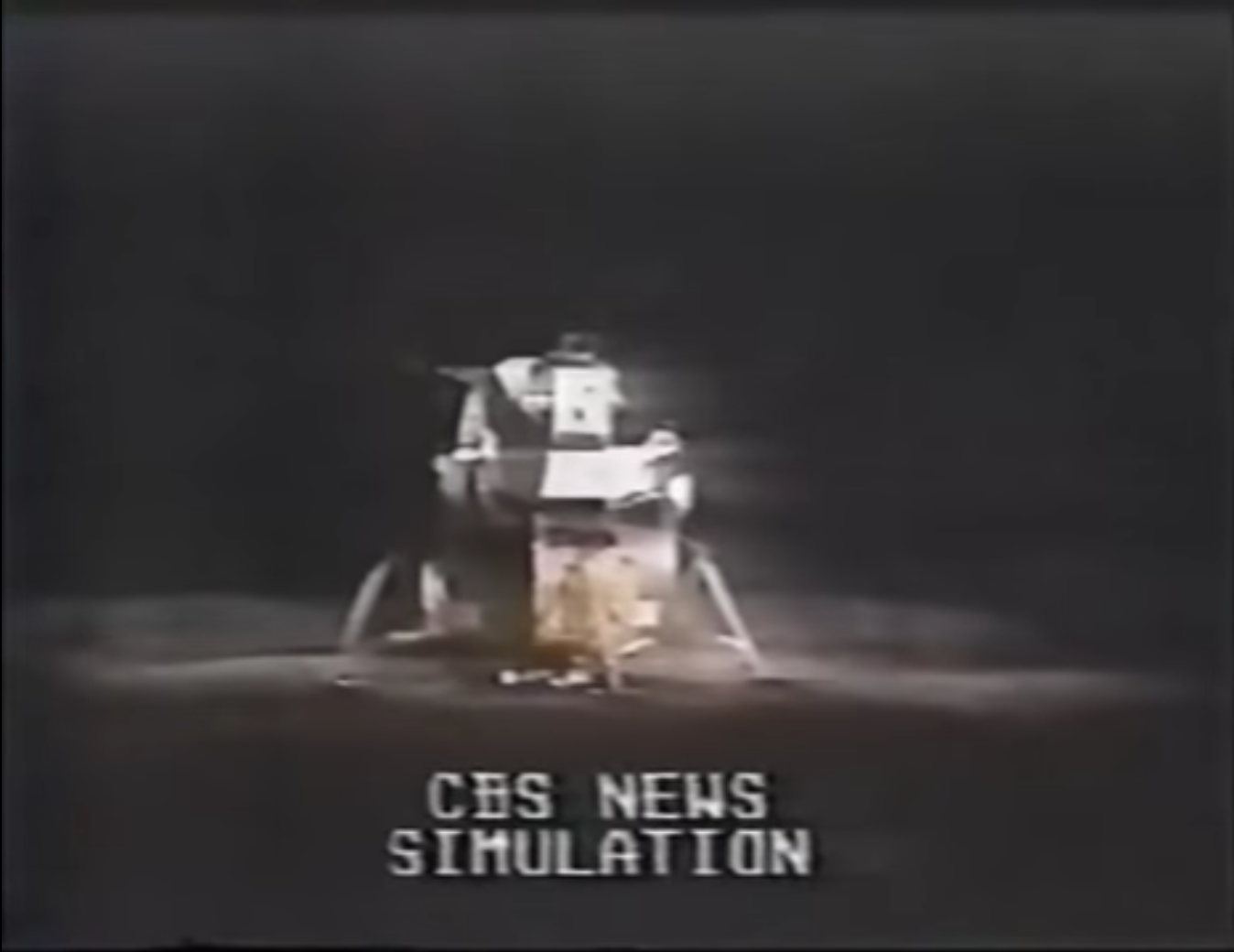
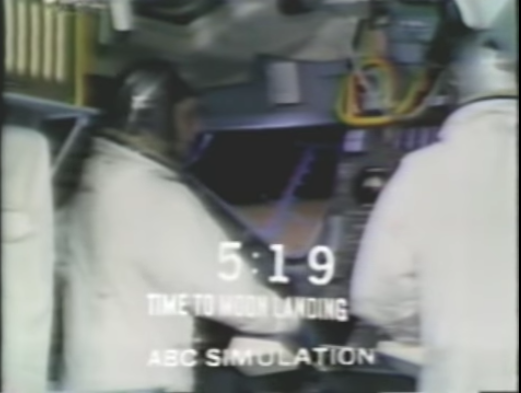
During the long wait between the landing and the moon walk, ABC filled time with man-in-the-street interviews by Sam Donaldson, a silent movie about a trip to the moon, poetry from Poet Laureate (and author of Deliverance) James Dickey, and Duke Ellington singing a new composition, "Moon Maiden." That ABC clip includes a news report, anchored by Peter Jennings, which has a story about Ted Kennedy leaving the scene of a car accident, the event that made Chappaquiddick Island infamous.
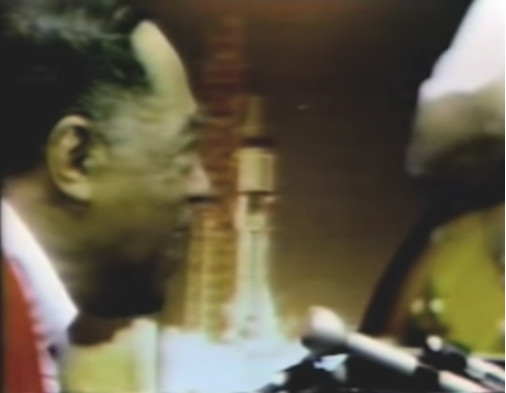
These links have either embedded video or links to video of archived live news coverage:
- NBC coverage of launch (via It's the Minder
- CBS coverage of Apollo 11 launch
- UPDATE 2019/07/16:CBS Apollo 11 launch coverage from 3.5 hours before and 1 hour after launch, CBS News's own stream, complete with news breaks and commercials. (Via Gizmodo.)
- CBS coverage of landing and moon walk via kottke.org
- ABC coverage of launch and Trans Lunar Injection, landing and moonwalk via WAAY
(Tulsa readers will understand why I put the networks in that order.)
"Apollo 11: What We Saw," presented by Bill Whittle for the Daily Wire, provides an interesting angle on network TV coverage, contrasting the networks' animations and simulations, which he remembers seeing as a 10-year-old, with the tension in the lunar module as the guidance computer overloaded and as the pre-programmed landing site turned out to be a crater the size of a football field, surrounded by large boulders. Here is the trailer for the series of five hour-long episodes, and here's a link to Episode 1.
C-SPAN has aired contemporary NASA documentaries about the earlier Apollo missions:
- AIRBOYD playlist of NASA Apollo documentaries
- Apollo 8: Debrief: NASA documentary narrated by Burgess Meredith
- Apollo 9: Three to Make Ready: NASA documentary about the mission to test lunar module docking in Earth orbit.
- Apollo 10: To Sort Out the Unknowns : NASA documentary on the dress rehearsal for the moon landing.
This article in the July 1969 issue Popular Science will give you an idea of what a more technically literate person would have been reading: First Men On The Moon: By Dr. Wernher von Braun, describes the landing process, moonwalk, experiments, ascent, return, and quarantine.
For a more behind-the-scenes look, NASA and the National Archives have made a great deal of mission audio and video, plus documentary films and documents, available online:
- Apollo 11 mission audio from NASA on the Internet Archive
- Restored downlink video of the complete moonwalk, including the higher-quality Australian feed from the first three minutes
- NASA high-def (720p) video of Apollo 11 moonwalk and mission highlights
- National Archives: Practice Makes Perfect: How the Apollo 11 Crew Prepared for Launch: Video of practicing low-gravity maneuvering, LEM control, splashdown, and egress
- National Archives: National Archives' Film Footage Fuels Apollo 11 Film: This story has links to digitized Apollo 11 documents online.
The recently released documentary Apollo 11 incorporates large-format, archival NASA footage, long overlooked. It appears that the film has already been and gone here, but you can stream it online and purchase it in various formats for home viewing. According to the movie's website, Kansas City and DFW are the nearest metro areas where you can still see the film on the big screen.
Now for some present-day documentaries and commemorations:
- "Chasing the Moon," a three-part series in The American Experience, is available on the PBS website for free streaming through September 10. Part 1 covers the beginnings of the space race from Sputnik to the death of Kennedy; Part 2 covers the missions leading up to Apollo 11, and Part 3 is focused on the moon landing mission. Each episode runs about 2 hours.
- NASA administrator Jim Bridenstine on the 50th anniversary of Apollo 11 and the plan to return to the moon
- Five recommended space documentaries available for streaming
- Apollo 8 50th anniversary service at the Washington Cathedral
- Apollo 8: Discussion of 50th anniversary of first lunar orbit
- Wright Brothers National Memorial at Kitty Hawk, NC, will rebroadcast the 1969 TV coverage of the landing, just as it did during Apollo 11
- History.com has a story on Apollo 10's near disaster
- The US Mint's commemorative Apollo 11 50th anniversary silver dollar features a spacesuit footprint in lunar soil.
In a later entry, I'll highlight commemorations and special events in our part of Planet Earth.